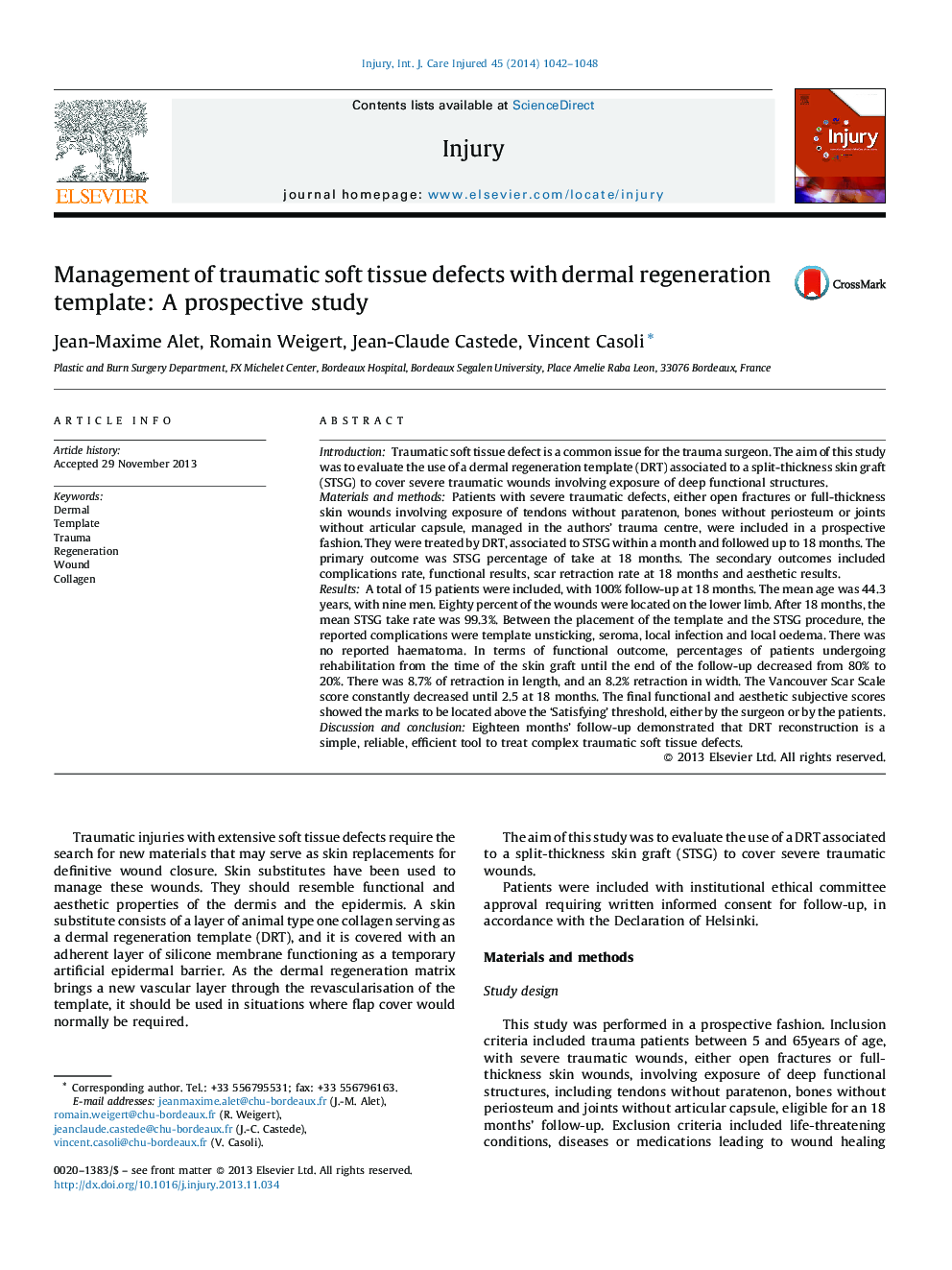| Article ID | Journal | Published Year | Pages | File Type |
|---|---|---|---|---|
| 3239398 | Injury | 2014 | 7 Pages |
IntroductionTraumatic soft tissue defect is a common issue for the trauma surgeon. The aim of this study was to evaluate the use of a dermal regeneration template (DRT) associated to a split-thickness skin graft (STSG) to cover severe traumatic wounds involving exposure of deep functional structures.Materials and methodsPatients with severe traumatic defects, either open fractures or full-thickness skin wounds involving exposure of tendons without paratenon, bones without periosteum or joints without articular capsule, managed in the authors’ trauma centre, were included in a prospective fashion. They were treated by DRT, associated to STSG within a month and followed up to 18 months. The primary outcome was STSG percentage of take at 18 months. The secondary outcomes included complications rate, functional results, scar retraction rate at 18 months and aesthetic results.ResultsA total of 15 patients were included, with 100% follow-up at 18 months. The mean age was 44.3 years, with nine men. Eighty percent of the wounds were located on the lower limb. After 18 months, the mean STSG take rate was 99.3%. Between the placement of the template and the STSG procedure, the reported complications were template unsticking, seroma, local infection and local oedema. There was no reported haematoma. In terms of functional outcome, percentages of patients undergoing rehabilitation from the time of the skin graft until the end of the follow-up decreased from 80% to 20%. There was 8.7% of retraction in length, and an 8.2% retraction in width. The Vancouver Scar Scale score constantly decreased until 2.5 at 18 months. The final functional and aesthetic subjective scores showed the marks to be located above the ‘Satisfying’ threshold, either by the surgeon or by the patients.Discussion and conclusionEighteen months’ follow-up demonstrated that DRT reconstruction is a simple, reliable, efficient tool to treat complex traumatic soft tissue defects.
